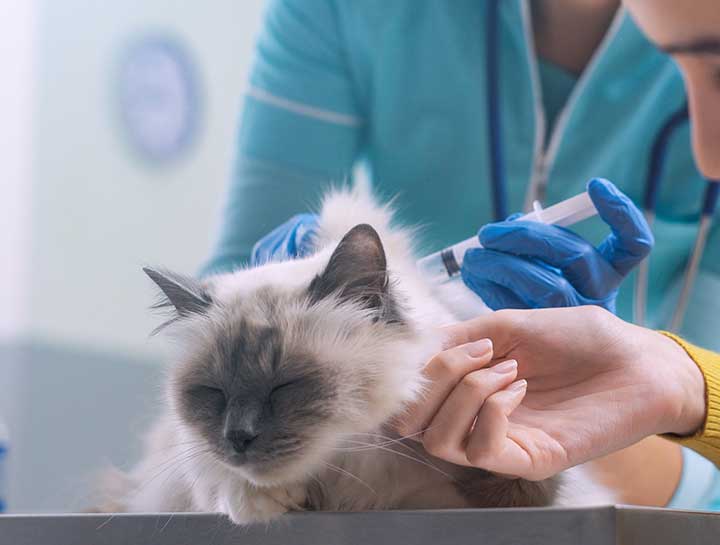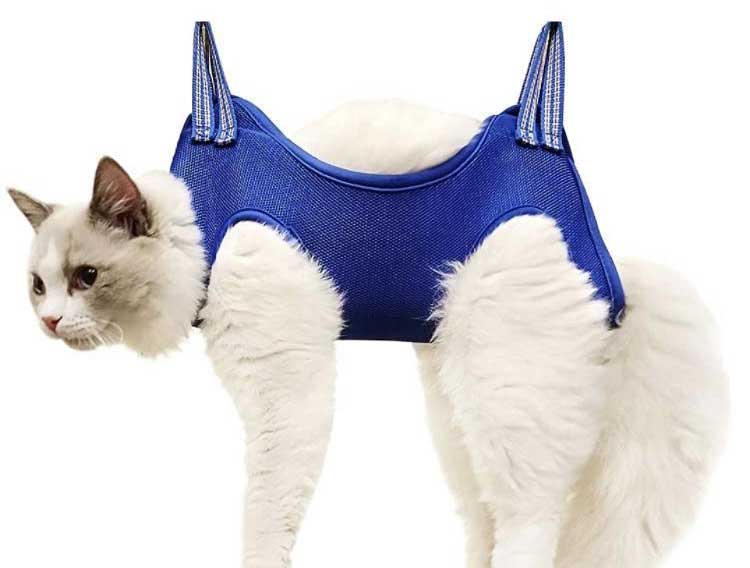How to Give an Injection to a Difficult Cat

ON THIS PAGE:
When it comes to giving your diabetic cat an insulin injection, your veterinarian will give you detailed instructions to help you and your kitty feel comfortable with the process. And, if you need a refresher, there is no shortage of online instructions for insulin injection administration.
But what happens if you get home and your cat decides not to cooperate? Or, they’ve done great with their injection for years, but now…not so much? This article will focus on how to administer an insulin injection to a difficult cat with some tips for making the task easier for you both.
Prepare Ahead of Time for Your Cat’s Injection
Sometimes, all you need is a helper, someone who can hold your cat while you give the injection. But if that doesn’t work, or you don’t have someone who can help during injection time, try these ideas:
Find a location that your cat is comfortable with. That may be on their favorite perch or in your lap. Make sure that you can comfortably administer the injection and remain calm. Pets can sense when their owners are nervous and this can influence their mood.
You can administer the injection along with food or treats to help distract your cat from the “pinch” (more about this below). When you do, don’t forget to reward your kitty for taking the injection calmly. This could be anything they enjoy, like snuggles, playtime with their favorite toy, or a different low-carb treat.
Condition Your Cat to Accept an Injection
Food-motivated cats may hardly notice the injection if they are distracted with low carbohydrate treats, such as plain cooked chicken. You may be able to condition your kitty to look forward to their injection by using food—if they come to associate the injection with something good.
Here’s how you can condition your cat to accept an injection:
- Start by offering a vet-approved canned food or a low-carb treat while simply petting the injection site. Then take the food away.
- Transition to pinching the skin while giving the food back. Then take the food away again.
- Next, while you’re tenting the skin, offer them their food or treat them again. Then…you guessed it!…take it away.
- Finally, take a syringe without a needle, or with the cap still in place covering the needle, and lightly push it into the area you’ll be injecting. All the while, offer a high-value, low-carb treat or kibble.
Once your cat is comfortable with that, you should be able to administer the injection without a fight. If, at any time, your kitty is uncomfortable with a step, repeat the conditioning until they no longer react proceeding.
Reminders for Administering an Injection to Your Cat
It’s normal to want to try and get the injection over for your kitty as quickly as possible, but insulin that is pushed through the syringe too rapidly can lead to pain.
Occasionally, the aversion to injection may be because of scar tissue built up over time in the area. So, you may try a different site for the injection. Many cats tolerate the injections better when they are administered about one to two inches from the spine, either near the shoulder blade or the hip bone. Be sure to alternate the location each time you give an injection to avoid repeated irritation to the area.
If, after all of this, you’re still met with teeth or claws, consider a gentle restraint. For example, wrap your cat in a towel, exposing only the injection site. Or, use a grooming sling found on Amazon.com. Even if you have to use restraint, be sure to reward your kitty afterward, as this could lead to less of a fight in the future.

It’s important to remember that, if your cat is fractious, it’s most likely coming from a place of pain, fear, or stress; and not because they’ve decided to be mean. If you still have difficulty administering an injection to your cat, call us. Together, we can find a way to make giving insulin to your kitty a whole lot less painful—for everyone!
